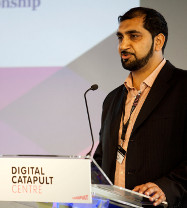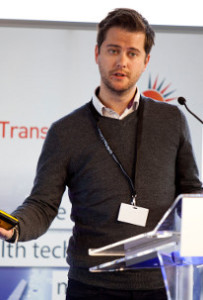Digital Health: Catapulting Personalised Medicine Forward
| AGENDA & SPEAKERS | DOWNLOADS | PICTURES/VIDEOS | CONFERENCE REPORT |
| SESSION 1 | SESSION 2 | SESSION 3 | SESSION 4 |
Session 2: Real time monitoring and enhancing the patient/practitioner relationship
The health and pharma sector have long been laggards in the adoption of information technology and this is being replicated in the slow uptake of pervasive and wearable digital technologies. Now though, the recognition that real time monitoring can assist stratification and support faster approaches to drug development and market access means the industry is looking to catch up in this sphere.
However, there are significant regulatory, privacy and governance challenges, noted Shahid Hanif, eHealth Data Development Manager at the Association of the British Pharmaceutical Industry. “If we can overcome these issues digital health will be a force for good,” Hanif said. “The industry as a whole is starting to take a far more patient-centric approach and is investing in technology to enhance this relationship.”
From the industry’s perspective, the ability to collect and analyse real world data will improve knowledge of the natural history of disease, enable disease phenotypes to be linked to genomics and other ‘omics, and underpin stratification. “The collection and use of real world data has grown in importance but there are lots of challenges in collecting it, of what is meaningful, and how it is used,” Hanif said.
In addition, real world data can assist pharma companies in demonstrating comparative effectiveness and cost effectiveness of its products, providing evidence for health technology evaluations.
There is also the prospect of real time pharmacovigilance to improve safety, and to provide a feedback loop from patients to physicians, supporting adherence and dose adjustment.
In drug development, real world data underpins the move to adaptive and flexible study designs and can reduce the time taken to recruit patients into clinical trials.
The pharma industry is open to working with technology companies to foster digital health as a means of enhancing the patient-doctor relationship, Hanif concluded.
Alex Hamlin, Product Manager at uMotif described how the company’s “beautifully-designed app” encourages people to engage in their healthcare and supports the relationship between patients, physicians and carers. Using uMotif people with chronic diseases are able to track both subjective measures, such as quality of sleep, and objective ones, such as blood glucose, and go on a “digital journey” tracking their condition.
The intention is not to follow patients in real time but that when patients see their doctors the information is there to inform the consultation. “Clinicians don’t want raw data, they want to know what’s most important; we provide them with insights,” Hamlin said.
There are undoubtedly inspirational possibilities in digital health, but from the patient perspective it is important not to get caught up in horizon scanning and fall into the hole gaping at our feet, Alastair Kent, Director of the rare diseases patients’ group Genetic Alliance UK, told delegates.
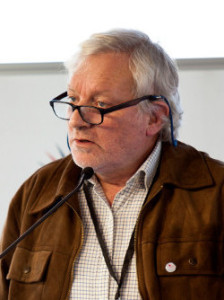
- Alastair Kent – Genetic Alliance UK
There are simple things that could be done here and now to improve healthcare and reduce costs, using existing technology. One example would be to use Skype to avoid a rare disease patient and carers having to travel huge distances for a 15 minute consultation. “Until we address basic practical problems about delivering better healthcare, digital health will remain an aspiration,” Kent said.
This is not to deny the potential digital health holds to promote improvements in the diagnosis and treatment of the 8,000 or so rare diseases. Many are poorly characterised and little understood. “There are huge opportunities to improve the situation coming down the track,” Kent said.
Given this, it is critical that the NHS is prepared to deal with the large quantities of data, and that the bioinformatics capabilities are in place to translate the resulting insights into improved clinical practice.
No doubt, there is a data explosion in healthcare. The question is how can this be marshalled and interrogated to provide actionable insights. There is so much data, people may struggle to work out what to do with it, said Jeremy Nettle, Director of Global Healthcare at Oracle.
The aim is to, “Collect, understand, respond, act: which begs the question, where is the money going to come from for this? asked Nettle. Improving outcomes will be central to demonstrating cost benefits. It will not be sufficient merely to put the patient at the centre; they must be led by example and incentivised to change behaviours.
For example, asthmatics can receive alerts about high pollen counts or air pollution and warned to take an inhaler with them; people who are trying to give up smoking can be linked via social media with ex-smokers who have succeeded in giving up.
People are becoming more and more familiar with – and fonder of – sharing data on social media. Health will be the next arena where this will permeate. “What we are finding is that patients want to take ownership,” Nettle said.
| SESSION 1 | SESSION 2 | SESSION 3 | SESSION 4 |
This event was organised in collaboration with:
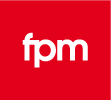 |
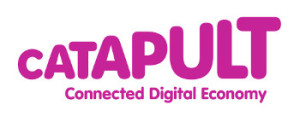 |
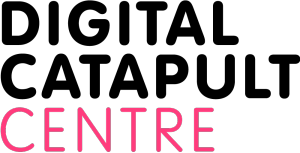 |

